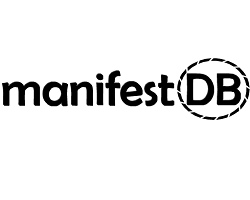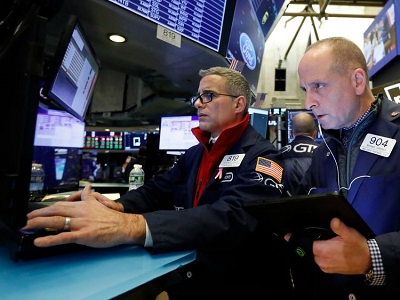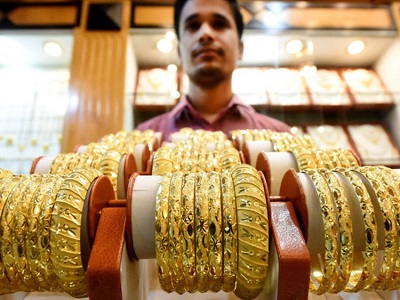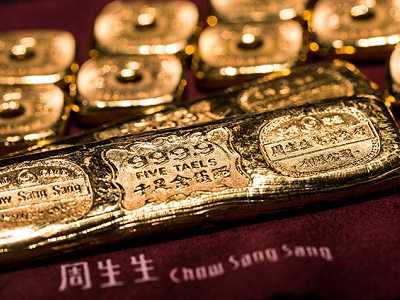Huawei is getting three more months before US ban takes effect.
Technology

Huawei is getting three more months before US ban takes effect.
Huawei has been given yet another reprieve from the Trump administration’s ban on its products, according to Commerce Department documents filed today.
Earlier this year, citing concerns of electronic espionage, the United States moved to restrict the purchase of equipment from “foreign adversaries.” The decision took aim directly at Huawei, as officials expressed concern that the Chinese government could exploit the China-based company to spy on Americans. (The company has denied any wrongdoing.) But after the initial announcement, Huawei and its subsidiaries were quickly granted licenses to continue work in the US. And after one 90-day delay ended in August, Commerce Secretary Wilbur Ross granted another, giving rural wireless carriers that rely on Huawei products time to change their equipment. The delay was again set to end this week, but according to the documents, the US will grant another extension. Barring yet another change, the ban is now set to take effect after February 16th, 2020. “Extending the Temporary General License won’t have a substantial impact on Huawei’s business either way,” a Huawei spokesperson said in a statement. “This decision does not change the fact that Huawei continues to be treated unfairly.” The newest delay comes amid the continuing trade negotiations between the US and China. Despite lawmakers expressing national security concerns, President Trump has suggested that Huawei’s fate could be part of a trade deal with China.
Shipping

Wärtsilä, PSA Marine Join Forces on Clean Energy Shipping Solutions.
Technology group Wärtsilä and Singapore-based towage services provider PSA Marine have agreed to collaborate in the co-creation of smart technologies for the marine sector.
On November 14, 2019, the parties signed a letter of
intent as part of the events celebrating the anniversary of the opening of the Wärtsilä Acceleration Centre in Singapore. With one dual-fuel LNG harbor tug already in service and another joining the PSA Marine fleet by the end of December 2019, PSA Marine and Wärtsilä have pledged to design and develop more solutions for smart and low-emission harbor craft. The intention is to integrate the deep capabilities developed in the IntelliTug project with new configurations and concepts of hybrid, electric and other clean energy sources. “PSA Marine and Wärtsilä intend to lead and develop smart, scalable, and clean energy solutions for the longer term, as we play our part towards decarbonisation and the reduction of greenhouse gas emissions,” Peter Chew, Managing Director of PSA Marine, commented. According to Wärtsilä, specific collaboration areas envisioned include the use of electric or hybrid technologies that further the use of low-emissions energy and propulsion systems, the incorporation of next-generation smart vessel technologies, the adoption of secured connectivity to facilitate ship-to-shore data exchange and marketing and branding activities that generate awareness. “The Acceleration Centre promotes innovation and joint projects with qualified partners in support of Wärtsilä’s ambition of a Smart Marine Ecosystem that will deliver huge advances in efficiency, safety, and environmental performance,” Mervin Ong, Managing Director, Wärtsilä Singapore, said. “Our on-going IntelliTug project was the centre’s first co-created initiative together with PSA Marine, the Maritime and Port Authority of Singapore (MPA), Lloyd’s Register, and the Technology Centre for Offshore & Marine Singapore (TCOMS). This cooperation with PSA Marine is now being continued through this agreement, and we look forward to continuing our innovative and important work together,” Ong added. The IntelliTug project is bringing an autonomously operated harbor tug concept to feasibility. The concept is undergoing testing aboard PSA Marine’s ‘PSA Polaris’ tug. Among the enabling technologies thus far employed are the joystick and digital control of the vessel’s azimuth thrusters, virtual anchoring to hold position, smart navigation with automatic path planning, and situational awareness for detecting and avoiding the risk of collisions.

Yang Ming Suffers Wider Net Loss After Returning High-Cost Chartered Boxships.
Taiwanese shipping company Yang Ming Marine Transport Corporation plunged deeper into the red in the third quarter of this year after returning several high-cost chartered vessels.
Yang Ming’s net loss after tax for the third quarter was
TWD 1.38 billion (USD 44.43 million), compared to a net loss after tax of USD 30 million suffered in Q3 2018. As explained, Yang Ming’s Q3 results were impacted by its strategic decision not to exercise options with respect to certain formerly chartered vessels. Having started last year, Yang Ming already redelivered thirteen of its high-cost chartered vessels and there will be another five next year. By opting out, the company incurred obligations under the charter parties. The potential effect of the arrangement was estimated at USD 44.75 million and lowered Yang Ming’s third-quarter results, which otherwise would have showed a profitable quarter. Nevertheless, Yang Ming’s cash flow and operations have not been negatively affected. Consolidated revenues for the third quarter of 2019 totaled USD 1.22 billion, a slight drop from USD 1.29 billion seen in Q3 2018. Business volumes increased by 1.99% year-over-year to 1.44 million TEUs in the third quarter of 2019 from 1.41 million TEUs in the corresponding period a year earlier. What is more, year-to-date consolidated revenues increased by 9.59% year-over-year to USD 3.65 billion and volumes by 3.84% to 4.07 million TEUs. Net loss after tax for the first three quarters was USD 106.89 million, an improvement of 50.19% year-over-year. According to analyst firm Alphaliner, annual capacity growth is forecast at 3.7% and global throughput growth for 2019 is estimated at only 2.5%, which suggests a softer market demand than was previously expected. Meanwhile, the container shipping market remains vulnerable to trade uncertainties and geopolitical tensions. It is unclear to what extent will these tensions and uncertainties have on demand, Yang Ming said. “Despite unpredictable market conditions, Yang Ming has improved its volume and revenue largely due to the efforts of business strategy and competitiveness enhancements,” the company noted. Following vessels’ redeliveries coupled with Yang Ming’s future containership newbuilds, the company expects that it would optimize its operating cost. “Anticipating ongoing US-China trade disputes and a shift in the global supply chain, Yang Ming will continue to optimize its Intra-Asia service network,” the company added.

In Depth: TGA Vice Chairman: Registering Ships under Saudi Arabia’s Flag Now Takes Less Than 2 Minutes.
The growth of the Saudi Arabian flagged fleet by 28 percent in 2018 can be largely attributed to improvements achieved by the country’s maritime authority, Vice Chairman of the General Authority for Transport for the Maritime Transport Sector,
Farid bin Abdullah Al-Qahtani, said. Speaking to World Maritime News on the sidelines of the Sustainable Marine Development Towards 2030 and Beyond conference, which is being hosted by the Kingdom of Saudi Arabia this week, Al-Qahtani noted that the improvements now enable shipowners to register their ships under the Saudi Arabian flag in less than two minutes. “We are working hard to make everything easier than before, and more professional,” Al-Qahtani explained. When asked about the TGA’s role in reaching the Kingdom’s Vision 2030 goals, the TGA vice chairman said the authority was going in the right direction, stressing that Saudi Arabia was party to almost 40 International Maritime Organization (IMO) conventions and that the authority’s goal was to ensure compliance with all of them. He highlighted the fact that the Saudi Arabian fleet almost doubled in gross tonnage between 2017 and 2018, growing from 3.4 million tons to a little under 8 million tons in 2018. Reflecting on the conference in Jeddah and the impressions so far, Al-Qahtani said that the Kingdom of Saudi Arabia had worked hard ever since joining IMO in 1969 and that the conference was an opportunity for the Kingdom and its maritime bodies to show off their progress. “This conference, organized in cooperation with the International Maritime Organization (IMO), has been hosted for the first time by the Kingdom of Saudi Arabia and we are really happy with the high-quality speakers and other guests and we want to thank them for their attendance,” he said. “The conference focused on two goals, empowering women, and protecting the world’s oceans and seas, and our another aim is to highlight that we are also ready to help other countries achieve these goals.” Al-Qahtani added that Saudi Arabia was working on securing better opportunities for women to join the maritime industry, including covering the academic prerequisites. “There are women already working in the sector in Saudi Arabia and I am sure that we are a few years away from seeing Saudi women working on board ships.”

Rising Operating Vessel Costs Push GulfNav Deeper into Loss.
Dubai-based shipping company Gulf Navigation Holding (GulfNav) closed the third quarter of this year with a widened net loss year over year (YOY).
The company suffered a net loss of AED 18.5 million (USD 5.04 million) during the three-month
period ended September 30, 2019, against a net loss of AED 3 million seen in the corresponding quarter a year earlier.
The Q3 results brought the company’s total loss for the first nine months of 2019 to AED 46.3 million, compared to a loss of AED 17.8 million reported in the same nine-month period last year.
As explained, the decline in the company’s financial performance is due to the high operating costs of vessels coupled with lower asset utilization in the quarter.
Operating revenue, on the other hand, rose to AED 44.6 million in Q3 2019 from AED 38.8 million in Q3 2018, representing an increase of 15 percent. What is more, operating revenue for the first three quarters of 2019 went up by 19 percent to AED 130.4 million from AED 110 million recorded in the corresponding period of 2018.
Gulf Navigation also informed it had completed a 10-year special survey and ballast water treatment installation program on its four vessels chartered to SABIC.
After a period of underutilization, GulfNav has now managed to secure spot and long-term charters for all nine vessels.
On cost structure front, the company has restructured its operations and reorganized its subsidiaries to ensure continuity of its operations and enhanced its productivity. Gulf Navigation said it was looking to outsource its ship management function to optimize its cost structure and enhance governance.
“Today, we continue to work on opportunities to drive positive changes through operational and administrative reorganization,” Saeed Mubarak Al Hajeri, Chairman of Gulf Navigation Board, commented.
“We continue to resolve legacy issues and I am confident of achieving operational and financial excellence in the near future. We look forward to wrap up a challenging year on a positive note and prepare ourselves for a positive 2020,” he added.
GulfNav has a fleet of fourteen vessels comprising chemical tankers, livestock carriers, offshore vessels and one well stimulation vessel, the company’s website shows.
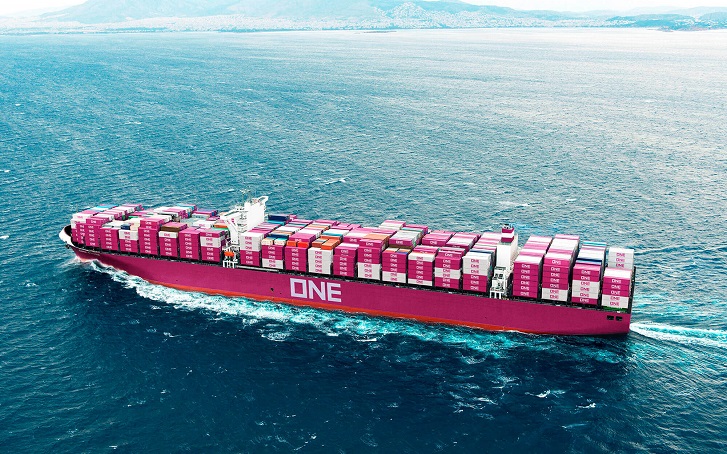
ONE Containership Clashes with Tanker in Piraeus Port.
The ultra large container vessel (ULCV) ONE Blue Jay took part in a collision off the Greek port of Piraeus on September 26.
Ocean Network Express (ONE) confirmed that its chartered boxship “came into contact with a chemical
tanker in the vicinity of Port of Perama, Piraeus, Greece, at around 1409 hours local time.” While entering the port, the 14,000 TEU vessel crashed into the starboard side of the 6,285 dwt tanker Gunece, which was berthed at the time. According to media reports, the tanker suffered major damages while two of the 13 crew aboard the unit were injured. ONE noted that the 23 crew members of the 2016-built ONE Blue Jay were safe, adding that there were no reports of pollution from the vessel. ONE Blue Jay is currently berthed at the Port of Permana while investigations are ongoing, the operator said. AIS data provided by Marine Traffic shows that the tanker is also still moored in Piraeus. The port authority reportedly sent a number of tugs to assist the Turkish-flagged tanker, which tilted heavily after the collision.
Gulf
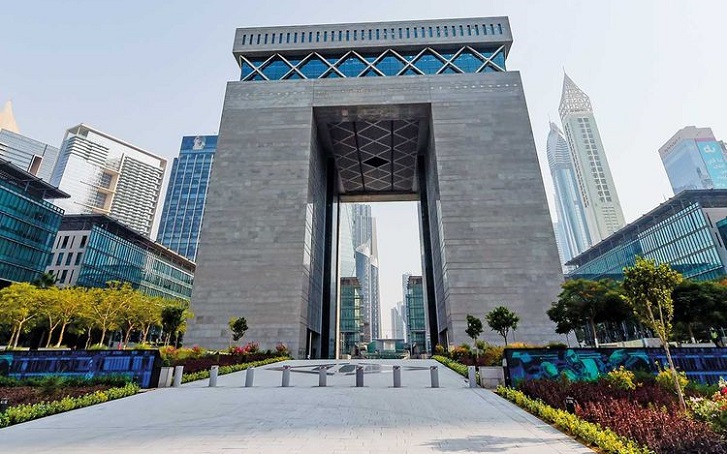 Dubai International Financial Centre (DIFC)
Dubai International Financial Centre (DIFC)
Alibaba’s WorldFirst launched at Dubai Int’l Financial Centre.
Dubai: Global currency exchange and payments firm WorldFirst set up an office on Sunday at the Dubai International Financial Centre, or DIFC.
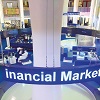
Dubai’s DFM, Abu Dhabi’s ADX end flat in tepid trade.

$50 million worth of diamonds sold at Dubai tender.
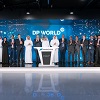
Dubai’s DP World raises $2.3 billion this year in sukuk, bond listings.
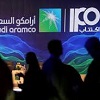
Saudi Aramco’s CEO meets Kuwait sovereign fund to discuss IPO-source.
Other News

Maersk Tankers takes over 11 ICBC tankers for BP.
In a deal which will see the Danish outfit bareboat charter the 11 vessels from ICBC Financial...

Nasdaq.The quarterly sandwich technique.
Mr Prospector has found the time to go through 43 recent earnings reports. He is less than impressed.
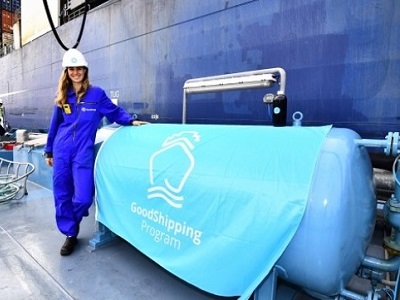
IKEA, CMA CGM and GoodShipping Test Biofuels.
IKEA Transport & Logistics Services, CMA Group and the GoodShipping Program have..

